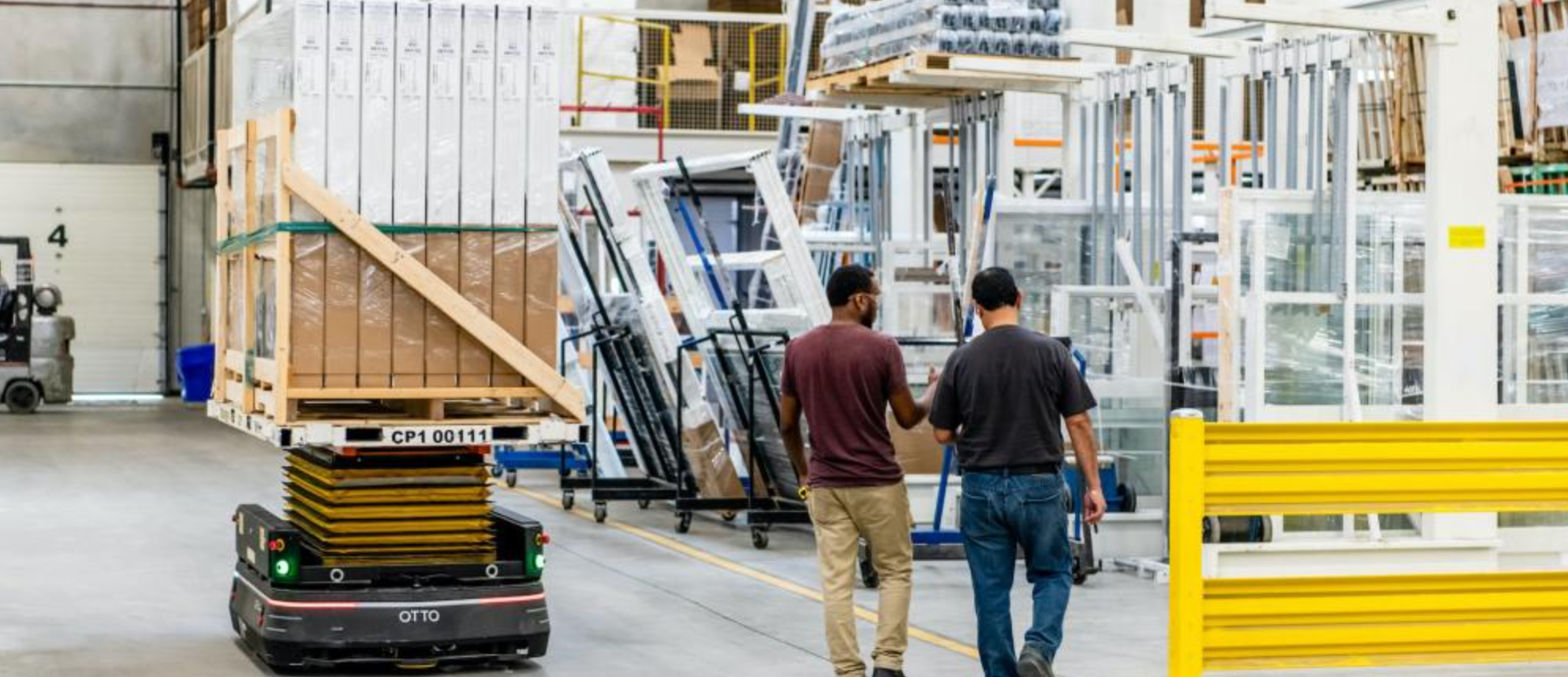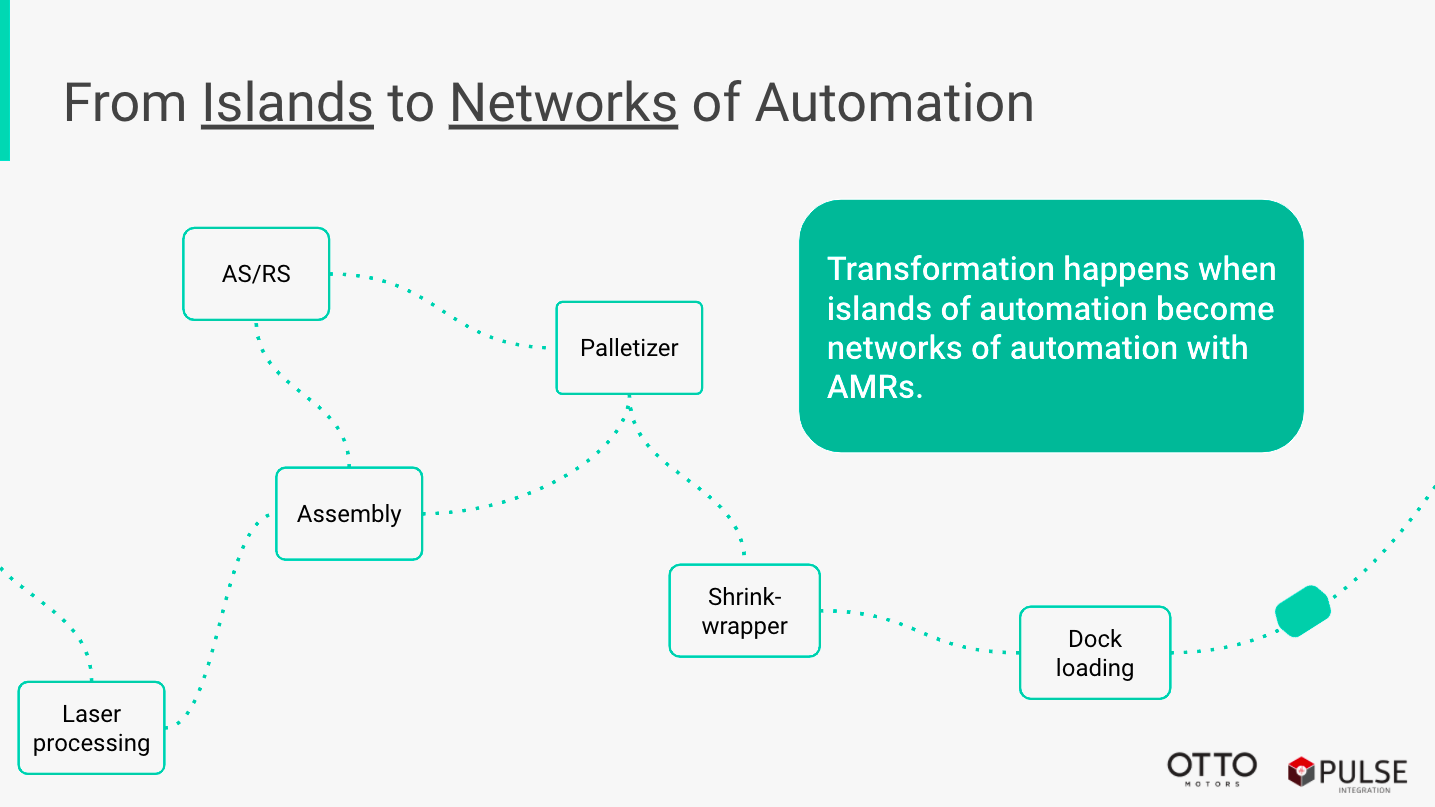Blog
AMRs, automation, and the human factor

Whenever the growth of robotics and AI-powered automation in industry is discussed, it is commonplace for concerns to be raised about the impact on employment and job opportunities.
Yet far from being viewed as a substitute for human labor, the consensus from within industry is that automation is best used to support and augment what people do. According to a study by Deloitte, 60% of companies said they were using AI to assist workers, compared to just 12% who said their primary aim was to replace people.
What is true is that increased collaboration between people and machines will see job roles change. One of the primary aims of automation is to take tasks out of human hands, particularly those that are repetitive, labor intensive, physically demanding and potentially dangerous. For areas like materials handling, that translates into a fundamental re-think into the role human labor plays.

Source: Gartner
COVID-19 has badly exposed the lack of resilience supply chains suffer from such heavy reliance on manual labor. Fewer workers on the factory floor, whether because of social distancing or increased absences, creates a drag on workflows simply because the movement of materials and goods slow down.
Faced with such rapid shifts in workforce organization and the overarching demands or operational continuity, mobile robotics provides a ready-made solution for materials handling and intralogistics. In its third annual report into the AGV and AMR sector, Interact Analysis concluded: “We believe that the impact of COVID-19 will lead to a long-term net positive for the mobile robot industry. E-commerce, near-shoring of manufacturing and adoption of robotics and automation to reduce reliance on human labor will all likely accelerate.”
Again, it is important to stress that “reducing reliance” on human labor does not mean replacing people. Used to their best potential, AMRs instead help to reorganize the movement of goods around factory floors where people still play critical roles, in a way that boosts productivity, efficiency, resilience and even safety.
Network of automation
OTTO Motors, in partnership with PULSE Integration, recently completed what we believe to be the first-ever in-depth study of the impact of AMRs deployed at scale. The OTTO Materials Handling Platform was introduced at two sites owned by a F500 company to provide a backbone for advanced manufacturing and e-commerce intralogistics.
Comparing the performance of the AMRs to existing processes and technologies, the cost impacts were stark. PULSE's study concluded that, on a cost-output basis, AMRs represent just 10% of the equivalent manual handling labor costs and 20% of the cost of a forklift and driver.
However, it was also clear that there continue to be aspects of materials handling where people perform better than robots. For example, while higher speeds and advanced safety features mean AMRs out-perform both manual carrying and driver-operated pallet loaders when transporting loads over distance, people are faster and more nimble moving goods over short distances and around stations.
Based on these insights, we concluded that AMRs have the biggest positive impact when workflows are organized so robots can handle the ‘heavy lifting’ of moving materials and goods at volume between locations, and people operate locally at stations to carry out picking, sorting, or quality control tasks.
Based on speed and reliability, we found this model achieved optimum results in terms of output and efficiency. But it also has clear safety benefits. By reducing the number of people moving around a facility, by eliminating the risks of driver error, and by taking on loading and moving tasks that put people at a heightened risk of injury, AMRs tackle three of the key hazards that lead to accidents in factories and warehouses.
Overall, we found the benefits were at their greatest at the new-build greenfield site we deployed the OTTO AMRs at, largely because the layout could be designed to support the division of labor between people and robots described above. It was at this site that we saw the full potential for using AMRs to create ‘networks of automation’, or using robotics as a key tool for designing end-to-end optimized workflows.

We start to see network effects as the benefits compound.
However, the majority of existing facilities have not been built with such a model of human-robot collaboration in mind, and present what at first look like barriers to the introduction of AMRs - narrow access routes, lack of space, layouts designed for human mobility etc.
Yet we saw plenty of evidence that AMRs have the flexibility to transform materials handling operations at brownfield sites, too. Small, agile operational footprints (e.g. greater maneuverability than both forklifts and track-dependent AGVs), the ability to integrate with existing machinery like conveyors and turret trucks, and real-time AI-driven decision making and routing all make AMRs suitable for deployment even in very tight, narrow environments.




